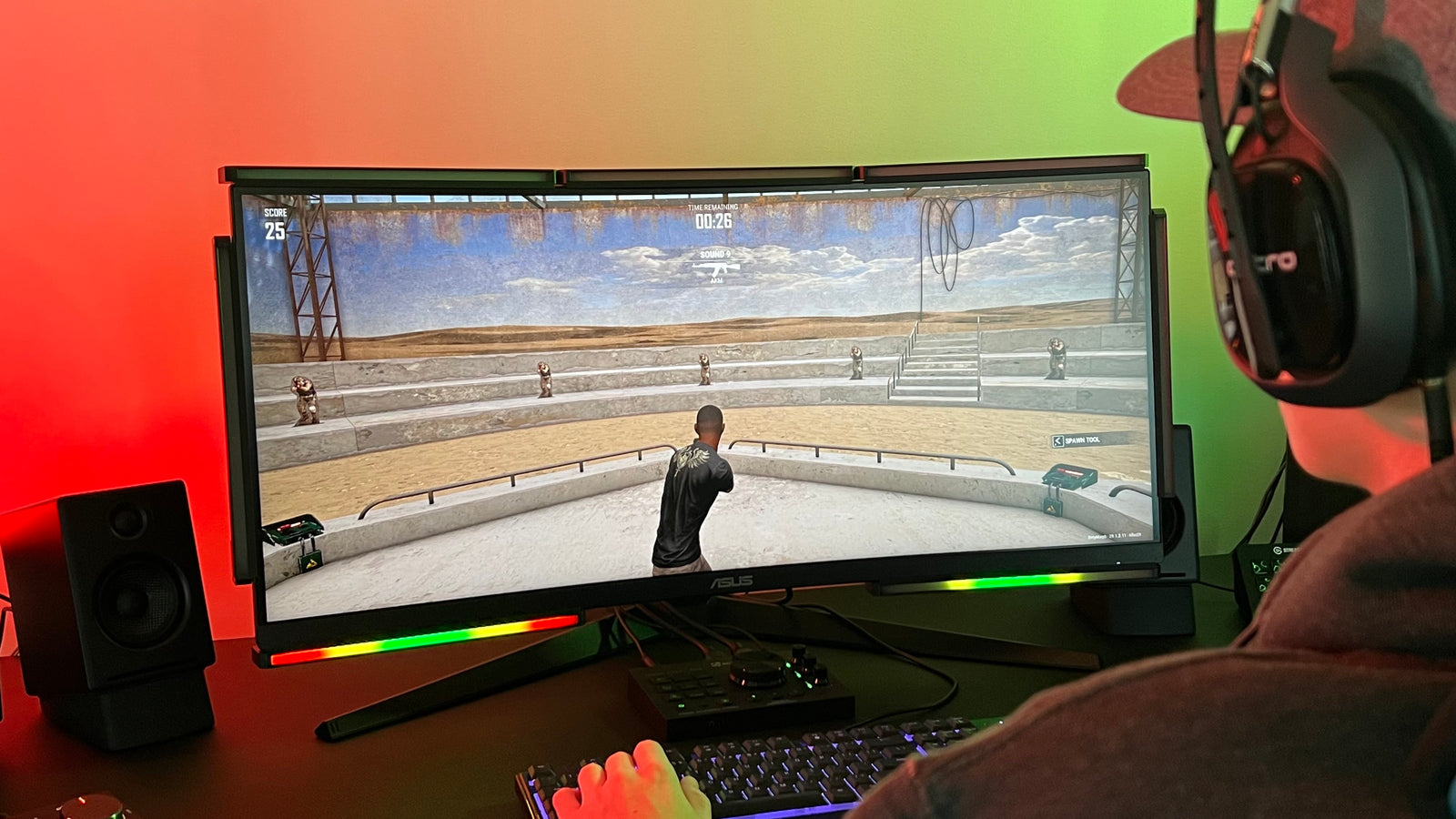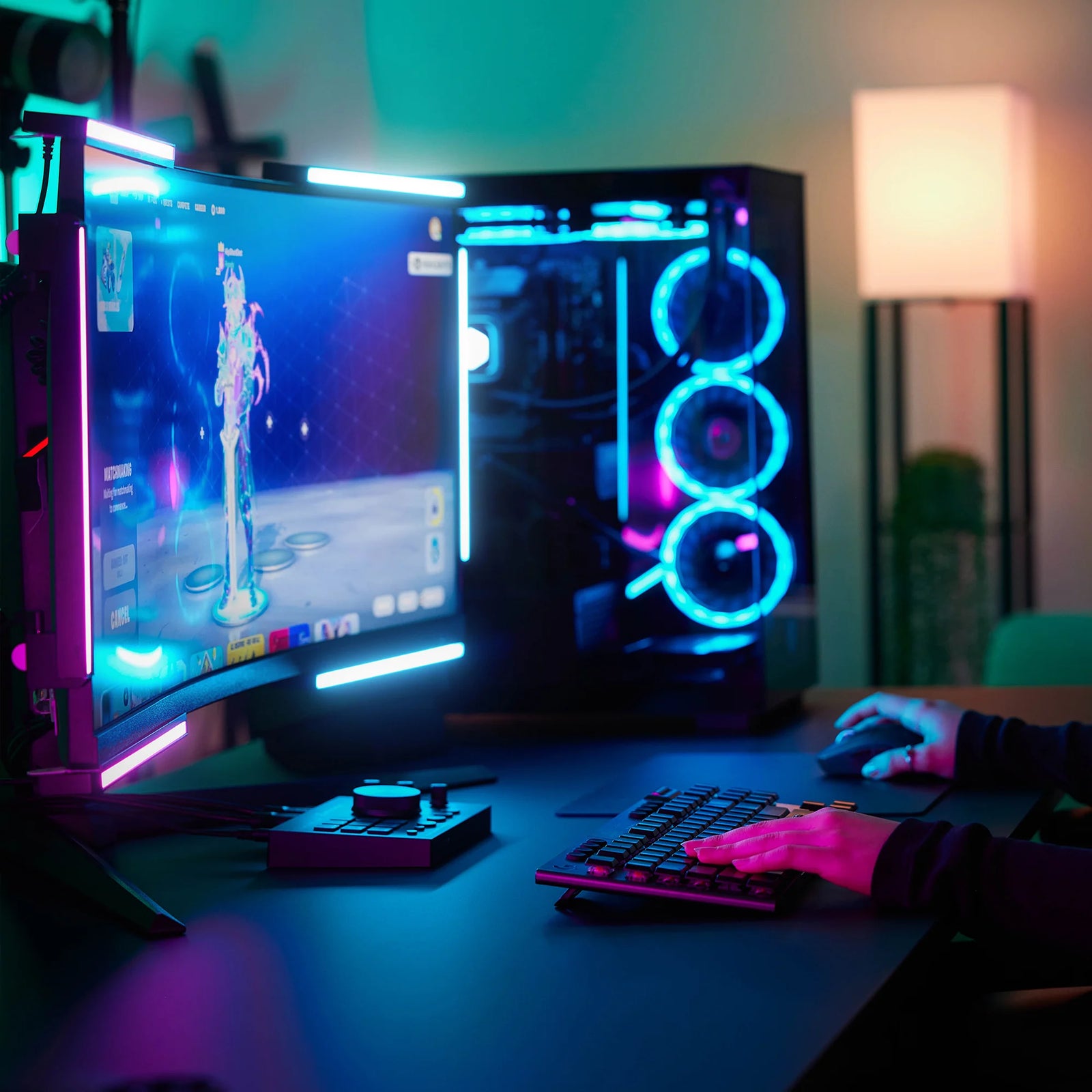Accessibility in gaming hasn't always been a topic of concern. But in the past 10-15 years, gaming has been more accessibly than ever. Gaming studios have been making strides in accessibility for years now, with tools like colorblind modes, dialogue captions, and adaptable controllers. Settings like these make games more inclusive for a larger number of players, than games that do not house these tools. One of the first of these tools were found in a game from the 1950's, Bertie the Brain. The game featured difficulty sliders to either raise or ease the difficulty, and is seen as one of the first accessibility features in gaming. Another notable stride of accessibility is the creation of the NES Hands-Free controller released by Nintendo in 1988. Being the first of its time, the controller paved a way for many physically disabled to play.
The deaf and hard-of-hearing community have lacked a solution for equalizing the playing field, although it doesn't mean there haven't been progress. Subtitles have been a great way for deaf and hard of hearing gamers to pick up on dialogue and narrative in story games. Although in many multiplayer games, subtitles rarely help in combat scenarios, such as distant gunfire, footsteps, and many other important in game audio cues. These cues being very important, one cannot rely oh sight alone, leaving deaf and hard of hearing players at a major disadvantage.
Two large titles that have come up with solutions for this issue include Fortnite, and Minecraft.
In Fortnite, a "Visualize Sound Effects" option allows players to see sound indicators in a small radius around the center of the screen. This enables deaf gamers to keep up in fights, especially when the enemy's location is unknown , but they're still running around and making sounds. It also helps deaf gamers find out where loot is, as sound is one of the main factors in finding chests.

Minecraft takes a different approach. The game features a subtitle system that provides text for spoken dialogue and describes environmental sounds. For example, it will display subtitles such as "Creeper hissing," "Water flowing," or "Zombie groaning," along with directional arrows to indicate where the sound is coming from.

Despite these systems, most games still need to put them in place. Most games remain hugely inaccessible for deaf or hard-of-hearing gamers, and that's where Audio Radar comes in. Audio Radar aims to bridge the gap for gamers no matter the game, as long as it supports surround sound systems. Audio Radar's strength lies in its compatibility with various games and platforms, offering a visual representation of directional audio cues. This allows players to experience the spatial aspects of sound and level the playing field. By transforming audio signals into visual cues through an array of LED light bars surrounding the player's monitor or TV, Audio Radar effectively communicates important in-game sounds, such as footsteps, gunfire, and vehicle movements, enabling players to make quicker, more informed decisions during gameplay.
The only limit Audio Radar currently faces is its inability to differentiate types of sounds, meaning that all sounds, whether they are footsteps or gunshots, are indicated in the same color. This could make it challenging for players to distinguish between different types of in-game sounds based solely on the visual cues provided. However, these limitations have already been eliminated with a particular version of Audio Radar, previewed at CES 2024. This iteration allows the user to customize the colors of sounds and can even indicate how far away the sound is. This version updates the light bars to use individual LEDS, allowing even more precision. This version will launch in the summer of 2024, allowing all existing radars to receive updates through the upcoming app.
The mission is to make Audio Radar the go-to solution for deaf and hard-of-hearing gaming accessibility. By providing hardware, software, and SDK that developers can easily integrate, Audio Radar is paving the way for more inclusive gaming environments. This approach benefits gamers with hearing impairments and enhances the gaming experience for all players by providing an additional layer of sensory feedback.
More at audioradar.com




